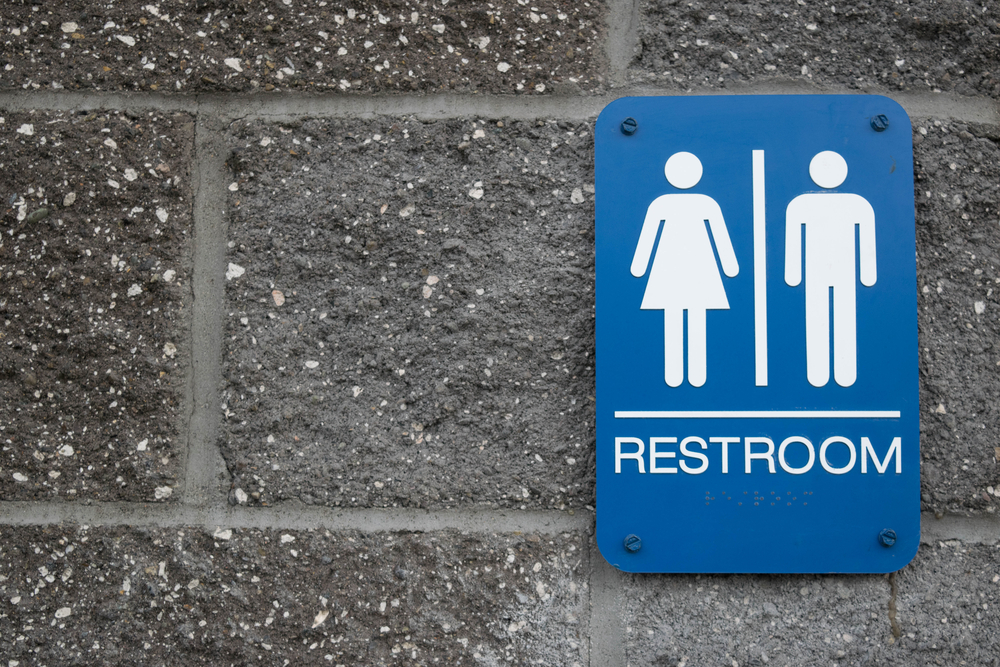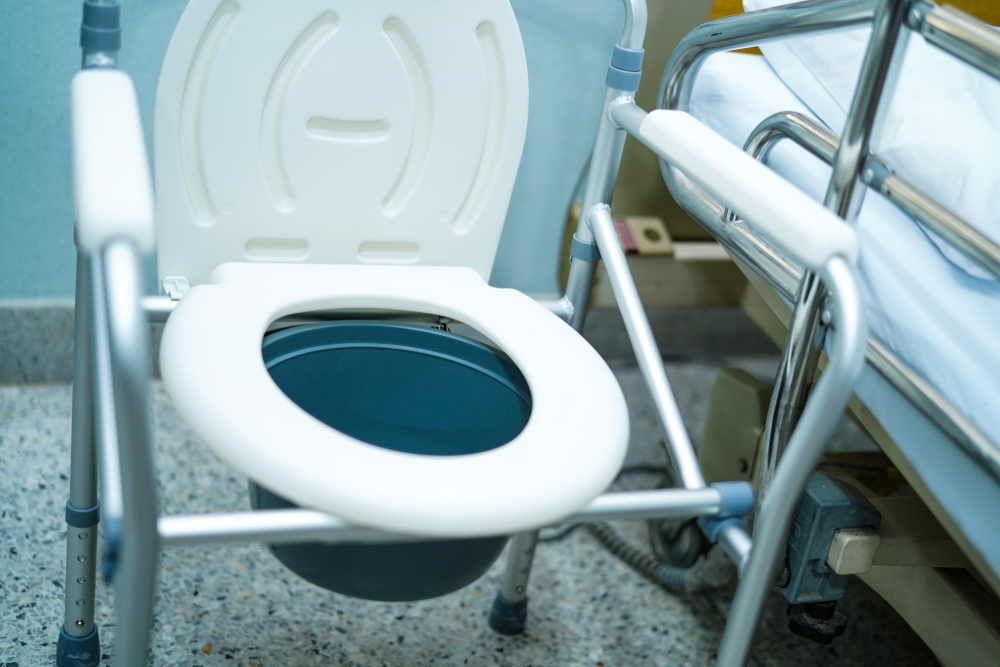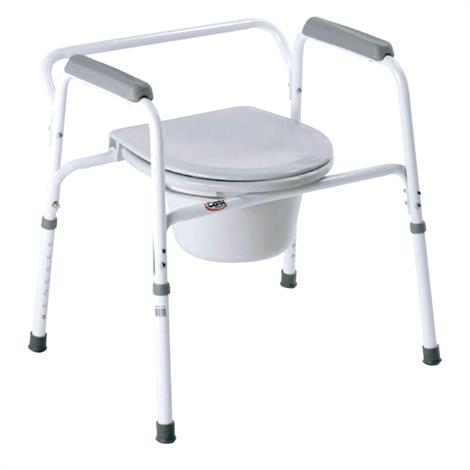
Incontinence is a frustrating and embarrasing challenging that often crops up with age. It can come in many forms, including slight leakage, the inability to ‘hold on’, or functional problems that make it difficult to reach the bathroom in time. In this post, we’re focusing on urinary incontinence in seniors.
Bowel-based incontinence happens too. This might even happen at the same time as urinary incontinence. But, each area is a detailed topic in its own right, so we’ll talk about bowel-based incontinence another time.
What is Urinary Incontinence in Seniors?

In general, urinary incontinence in seniors is also known as involuntary urination – and it can be a common problem, not just in seniors, but also in the population as a whole.
The term refers to urine leakage and as such there is a range of different types and underlying health issues.
Incontinence isn’t an issue that most people want to think about, especially not in relation to a loved one or a family member. Yet, for many seniors, incontinence can be a major issue and it is one that needs to be tackled respectfully and appropriately.
Types of Incontinence
Incontinence comes in many forms, and understanding the type of incontinence that a person experiences is critical for helping them to deal with the problem.
Some of the key forms of urinary incontinence in seniors are as follows:
Functional Incontinence
This is a common issue among older adults and tends to occur with normal bladder control. For seniors in this position, the issue is not bladder control. Instead, it is the fact that health conditions (like arthritis) make it difficult for them to move as fast as they need to.
Urge Incontinence
This form of incontinence is where a person experiences a sudden need to urinate, typically without warning. At the same time, they are often unable to hold the urine for the time that it takes to get to the bathroom.
This type of incontinence can be a major issue in public, as a person may not always know where the closest bathrooms are, or access to bathrooms may be limited.
The sudden urge to urinate can be a common outcome of prostate issues in men as well.
Overflow Incontinence
Here, the bladder does not empty all the way and because of this, small amounts of urine will frequently leak. This can occur as the result of some health issues, like spinal cord injury and diabetes, as well as an enlarged prostate in males.
Stress Incontinence
In this case, urine will leak from the bladder when pressure is placed upon it. This can happen in a range of circumstances, such as when a person is laughing, sneezing, or exercising. This type of incontinence is significant because it can begin early, with many women experiencing it around menopause.
Other Types of Incontinence
There are also other types of incontinence. Some of these are less common while others may be caused by very specific sets of circumstance or may be a combination of other types.
For example, mixed incontinence tends to be a combination of urge and stress incontinence and it has some symptoms of both.
Dealing with Incontinence

Finding ways to cure or control urinary incontinence in seniors is critical, because it will often keep seniors homebound or make them much less likely to go to social events. After all, if a person can’t control their own body, the prospect of being around other people can potentially be extremely embarrassing.
Talking to a physician about the issue is a very important step, as the physician can help in pinpointing the underlying cause of the incontinence and may also be able to suggest strategies to help with it.
In some cases, the underlying problem may be treatable. However, in other cases, solutions are more focused on helping to minimize the effect that the incontinence has on the individual’s lifestyle.
There are a number of different strategies that are relevant to helping with urinary incontinence, although a physician may also be able to suggest others.
Timing Bathroom Breaks
With many types of incontinence, one major issue is that people cannot trust the signals that their own body gives them about when they should be going to the bathroom.
Having a set time for bathroom breaks can help get around some of this issue. One example is to start off going every hour and either lengthen or shorten this frequency based on how well that works.
Lifestyle Changes
Some features of a person’s lifestyle can make incontinence issues worse. These include drinking alcohol and caffeine. Likewise, many people may benefit from losing weight or becoming fitter, which may make getting to the bathroom easier and potentially decrease some of the pressure on the bladder.
Be Aware of Surroundings
Issues with incontinence do not have to isolate a person, but they can mean taking extra care when going out. Knowing where the closest bathrooms is a particularly significant component of this.
It also helps if at least one person present is aware of the problem, such as a caregiver or family member. This means that they can assist in helping the person get to the bathroom.
It is also important because people who are unaware of the incontinence probably do not realize the significance of the person saying that they need to go to the bathroom. Being aware can make the difference between a good experience and a bad memory.
Kegel Exercises
There is a set of exercises that both men and women can do that help to strengthen the muscles of the pelvic floor. Doing this can improve bladder control. These exercises are most useful in the early stages of incontinence issues. You can find information on these exercises for women and for men by following the links in the text.
Talk to a Medical Professional
Even though incontinence is a common issue, it tends to be under-reported, largely because people find it very embarrassing. However, incontinence can often be caused by an underlying medical condition and in many cases it can actually be treated. Until a medical professional is consulted the underlying aspects of the issue will not be clear which limits the potential to effectively address the incontinence.
Talking to a medical professional is also critical because there are so many different approaches for treating and diagnosing incontinence and the issues that underlie it.
Because of this, the solutions and approaches that work for one person may not work for others.
One of the most effective things that you can do is find ways to address the problem that are specific to the person having it – whether that person is yourself or someone that you are caring for.
Advice for Caregivers
Issues of urinary incontinence in seniors can place considerable pressure on the person suffering from them and also on the caregiver.
It is easy to feel overwhelmed, frustrated, and even angry at incontinence, but these feelings are normal and are common among caregivers in these situations.
Create a Positive Environment
Working with the person and a physician is a critical approach to managing incontinence.
This involves creating an environment where the person you are caring for feels comfortable talking about incontinence issues, and where they do not feel like they will be judged.
Getting to that point may take time, especially if the person you care for is very embarrassed.
Keeping a relaxed attitude can help reduce the stress and embarrassment involved in the situation, making it easier to keep an open dialog.
Be Realistic
It is also important that all parties are realistic about the person’s self-care abilities.
For example, can the person recognize that they need to go to the toilet and are they able to remember its location and get there without issue? Some seniors will be able to do those tasks without a problem, while others won’t.
If the senior faces cognitive challenges or has dementia, managing incontinence may be much more complicated.
Products for Urinary Incontinence

Some products can make incontinence easier to manage. Some reduce the chance of accidents, while others make cleanup much easier.
The next section highlights some of our favorite tools and how they can help.
It’s likely that only some of the products will be relevant to your situation. But, if you can find even one or two products that make the process of managing incontinence easier, then it can help reduce the stress and challenge for everyone.
Reducing the Risk of Accidents
Let’s start off with products that help people to get where they need to in time. Some of these make it easier to reach the bathroom, while others are bathroom alternatives that are closer to hand.
Around the Home
With functional incontinence, people often struggle to get to the bathroom in time even though their bladder function is normal.
Some aids can help to make this process easier, especially in cases where the person finds the process of actually using the toilet to be challenging.
Raising the toilet seat is one approach. This makes it easier to get on and off the toilet. Doing so helps, as it makes going to the toilet easier. This can mean that seniors are less likely to put off using the toilet and accidents can be avoided.
The product below is one example of this style and comes from the site Health Products For You. The same site has a variety of products in different styles. You can see them here.
At the same time, clothing that makes toileting easy is also desirable.
For example, you would want to avoid jeans or pants with complicated fasteners, as these can be difficult to get off in a hurry. Ideally, pants that can simply be pulled on and off are the best, as they create fewer hassles.
Alternatively, velcro fasteners can also make clothes easy to get off and reduce the hassles involved in toileting.
For seniors who cannot get to the toilet in time, an alternative approach is a commode, like the one below.
Once again, the site Health Products for You has a large selection to choose from.
As you can see, a commode acts as a portable toilet. While this may not be an ideal solution, it is certainly more appealing than frequent accidents.
Often commodes are used at the bedside to help in cases where seniors cannot get out of bed and get to the bathroom in time. This also helps to reduce fall risk, because it would be easy for a senior to fall while hurrying to the bathroom in the dark.
You could also consider bedpans or a portable urinal.
When Out and About
Finding solutions when you’re out is trickier. One of the best approaches is to have a backup for when reaching a bathroom simply isn’t possible.
Portable urinals can help in this area. Some of them are very easy to use and discreet, especially for men. There are also unisex portable urinals and ones that are specifically designed for women. Examples include:
Some examples are shown in the box below. You can click on any of the links to visit Amazon and search for similar items yourself.
When Accidents Do Happen
There are also many products that you can use to help reduce the significance of any leaks or accidents that do occur.
For example, bed protectors help to absorb any leakage and prevent the bed itself from getting wet. This means that you can simply wash or depose of the protector after an accident, rather than having to deal with a damp mattress.
There are a lot of options for this type of product. NorthShore has a selection of products to choose from, including some that are disposable and others that are washable instead.
Whether you use a disposable or a washable approach depends largely on your budget and needs overall. Having a washable option does make sense though, as you are likely to have to wash the sheets on the bed anyway.
Underpads like the ones above can actually be used in any range of places where accidents might be an issue, such as on chairs or even on wheelchairs.
However, this is a topic that needs to be approached with care and consideration, as many people would be embarrassed by the use of pads – especially in cases where the pads would be visible to friends or family members.
This is one reason why incontinence underwear can be a good alternative in many situations. There is a large range of this type of product available and you can often find them in the grocery store. One brand that sells them is Depend, which are sold in stores and also on Amazon.
But, the number of adult diaper options is huge. You can often find simple yet effective solutions for men and women at wholesale prices at online stores.
An advantage of this type of product is that they are tailored towards the size of the individual and how much leakage occurs.
So, with a little trial and error, you could find one that was suitable to your specific situation.
One of the best things about incontinence underwear is that it is discreet.
It is certainly much more discreet than other alternatives and makes any accidents or issues much less noticeable. This can be an important advantage for people with incontinence as it can dramatically reduce the potential for embarrassment.
Final Thoughts
Urinary incontinence in seniors can be an embarrassing and challenging issue, especially for people who are used to having control over their own bodies and actions.
Yet, people with incontinence aren’t helpless, and with the right treatment and/or management, it is very possible for people with incontinence to still get out and be social.
Caregivers can also play a large role in making people feel less worried and self-conscious about their issues and also help them to feel more in control over their lives and their bodies.
Feeling Overwhelmed?
Check out our Caregiving Consulting service for personalized support and guidance.



Leave a Reply